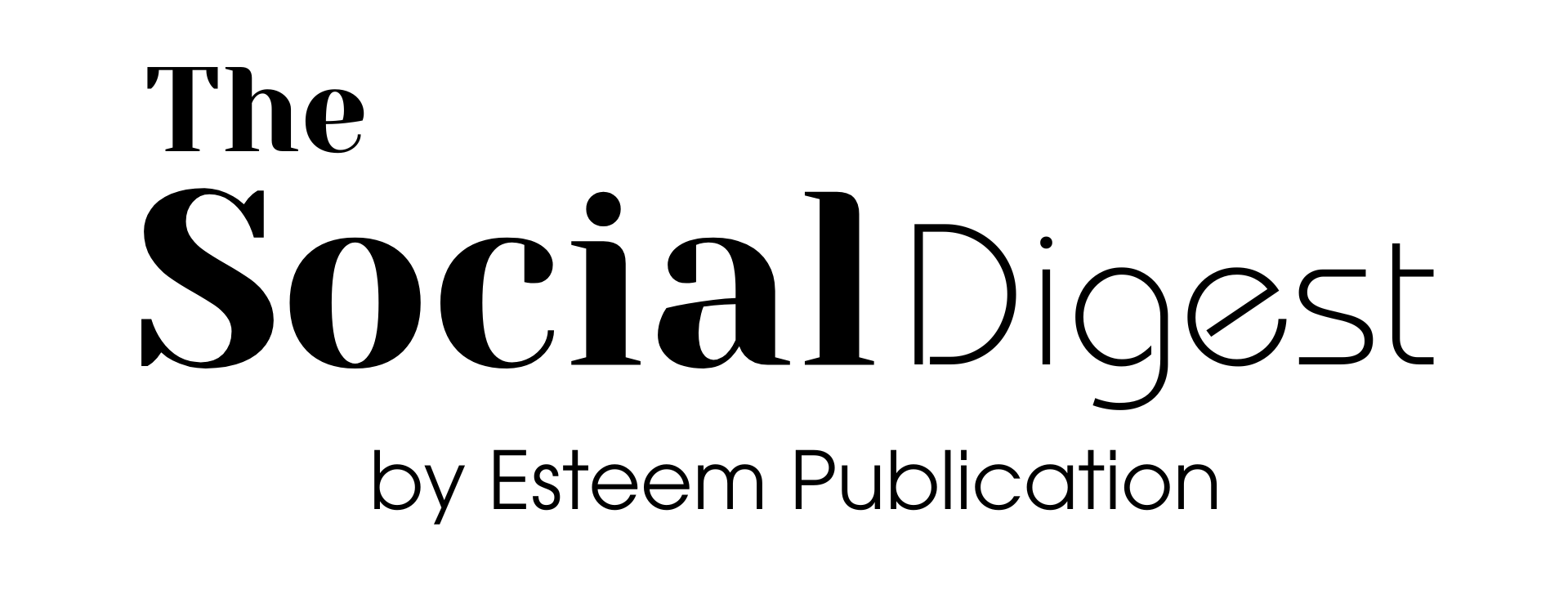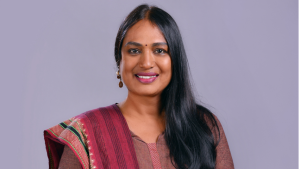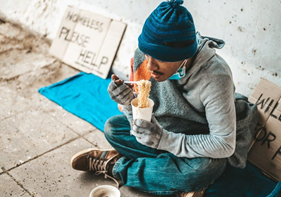Natali Ghawi is a trailblazing Regenerative People & Planetary Wellness Catalyst whose journey from architecture to sustainable wellness design inspires global changemakers. As founder of NABAD Consulting and a former Manager of Health, Equity, and Resilience at the World Green Building Council, Natali champions regenerative urbanism, community engagement, and climate resilience. Her work integrates cultural sensitivity, nature-based solutions, and holistic wellbeing to co-create spaces that heal both people and the planet. Through initiatives like WomenWorkJO, Natali Ghawi continues to redefine sustainability, regenerative design, and wellness leadership, empowering communities worldwide to reconnect with land, culture, and each other.

The Social Digest: Natali, your journey from architecture to a Regenerative People & Planetary Wellness Catalyst is remarkable. What sparked your passion for sustainability and wellness, and how has your background shaped your mission to create regenerative spaces?
My passion for sustainability and wellness grew from noticing how often spaces overlook the true needs of people, communities, and the natural world. Space is never just physical; it carries memory, emotion, and identity. It can either heal or harm. While architecture gave me the tools to shape the physical, I came to understand that true transformation begins with listening to the land, to its people, and to the deep, living web of connection between them. People and planetary wellbeing are inseparable, and my work is rooted in honouring this relationship. As a Palestinian woman, I carry the lived experience of displacement and resilience. That history taught me to see space not only as shelter but as story, presence, and possibility. It shaped my desire to design inner and outer landscapes that are not only functional but regenerative. I wanted to move beyond structures and focus on cultivating spaces that feel safe and sacred, spaces that restore connection to ourselves, to each other, and to the Earth.
The Social Digest: Through NABAD Consulting, you design spaces that enhance well-being. Can you share a project that exemplifies your regenerative philosophy and its impact on people or the planet?
One project that truly reflects our regenerative philosophy at NABAD Consulting is WomenWorkJO, an initiative dedicated to creating safe and inclusive spaces for women and girls across Jordan. This project goes beyond physical design; it weaves cultural sensitivity, community engagement, and environmental stewardship into every aspect. By collaborating closely with local women, tribal leaders, and community members, we aim to co-create spaces that honour tradition while introducing regenerative practices such as water harvesting, native planting, and sustainable resource use. These spaces provide safety and dignity while empowering communities to reconnect with their environment and culture. WomenWorkJO exemplifies how regenerative design can foster social resilience and ecological restoration simultaneously, creating a ripple effect that extends beyond individuals to nurture a more just and resilient society. Rooted in the deep connection between people and the Earth, it also inspires a broader awakening to living in harmony with Mother Earth.
The Social Digest: Your certifications, like WELL AP, LFA, and Fitwel Ambassador, are impressive. How do these credentials guide your approach to creating healthier, more equitable environments?
These certifications provide essential frameworks that deepen and shape my approach to designing healthier, more equitable environments. They equip me with science-based strategies and best practices to prioritise human health, social equity, and environmental sustainability in every project. They guide me to create spaces that support physical and mental wellbeing by focusing on key elements such as air quality, natural light, and comfort. At the same time, they inspire me to foster inclusive environments where everyone feels safe, valued, and able to fully participate. Together, these credentials form a holistic approach that places people’s health and dignity at the centre, ensuring the built environment actively contributes to thriving, resilient communities. They enable me to translate complex ideas into practical design solutions that deliver meaningful impact for both people and the planet.
The Social Digest: As Manager of Health, Equity, and Resilience at the World Green Building Council, what key challenge are you tackling, and how does your work advance global sustainability goals?
In my previous role as Manager of Health, Equity, and Resilience at the World Green Building Council, one of the key challenges I tackled was integrating health and equity more deeply into global sustainability frameworks. Often, sustainability efforts focus heavily on environmental metrics but overlook the social dimensions that are crucial for true resilience and wellbeing. My work aimed to bridge this gap by advocating for buildings and communities that support not only environmental sustainability but also human health and social equity. This meant developing tools and strategies to measure and improve how buildings impact mental and physical health, promote inclusivity, and enhance resilience to climate and social shocks. By elevating health, equity, and resilience as central pillars, my role helped advance global sustainability goals in a more holistic and just way, ensuring that the transition to a sustainable future leaves no one behind and supports thriving communities worldwide.
The Social Digest: As a woman leader in sustainability, what unique strengths do you bring, and how have you overcome challenges in this field? What advice would you offer women aspiring to lead in similar roles?
As a woman leader in sustainability, I bring a perspective shaped by resilience, empathy, and a deep commitment to equity. I believe in creating spaces where diverse voices are heard and valued because real progress comes from inclusion and collaboration. Challenges in this field often come from systemic biases and the underrepresentation of women in leadership roles. I’ve overcome these obstacles by staying resilient, seeking out mentors and allies, and continuously expanding my knowledge and skills. Embracing vulnerability and authenticity has also been key, allowing me to lead with both strength and compassion. My advice to women aspiring to lead in sustainability is to believe in your unique voice and perspective. Build strong networks, be curious and courageous, and never underestimate the power of collaboration. Remember that leadership is not about perfection but about showing up fully and driving meaningful change with passion and purpose.
The Social Digest: Your projects emphasize cultural sensitivity and community engagement. How do you ensure local voices and traditions are integrated into your regenerative Designs?
Local voices and traditions are integrated into regenerative designs through a process of deep listening and meaningful collaboration with communities. From the outset, engagement with local leaders, elders, and residents helps uncover the history, values, and needs that ground the project in its cultural context. This ongoing dialogue throughout the design process invites continuous feedback and adaptation, fostering trust and a shared sense of ownership. The approach weaves modern knowledge with indigenous wisdom, ensuring that spaces honor community traditions while embracing regenerative practices. By blending these perspectives, the design process nurtures spaces that sustain ecosystems, celebrate culture, and strengthen community resilience.
The Social Digest: Your involvement in COP29 and the Mind Body Space Symposium reflects your global influence. How do these experiences shape your vision for regenerative Urbanism?
Participating in global events like COP29 and the Mind Body Space Symposium has broadened my perspective on the urgent need for holistic approaches to urban design. These gatherings emphasize how environmental health, social equity, and personal wellbeing are deeply interconnected. Such experiences inspire a vision of regenerative urbanism that sees cities as living systems; places that restore natural cycles, nurture community bonds, and support the mental and physical health of all residents. Engaging with diverse voices and ideas at these events strengthens my commitment to fostering urban solutions that are equitable, resilient, and culturally rooted. They reinforce that true regeneration comes from collaboration across disciplines, scales, and experiences to create living landscapes that support both people and planet to thrive.
The Social Digest: Regenerative development aims to restore ecosystems and communities. What emerging trends or technologies do you see as critical for this field’s future?
Regenerative development is evolving in exciting ways, with emerging trends and technologies offering powerful tools to restore both ecosystems and communities. One key shift is the growing use of nature-based solutions, like green infrastructure, water-sensitive urban design, and native landscaping, which work in harmony with natural systems rather than against them. There’s also a rising focus on bioregional and systems thinking and circular design, where materials, resources, and energy cycles are locally rooted and regenerative by design. Digital tools, such as GIS mapping, AI for climate modelling, and sensor-based building performance tracking, are becoming essential in making data-informed decisions that align with ecological rhythms and social needs. Perhaps most importantly, there’s a movement toward blending traditional ecological knowledge with modern innovation. This convergence allows for a deeper, more holistic understanding of place, where regeneration is not just technical, but cultural, emotional, and relational. These trends are helping us move from sustainability to regeneration, from minimising harm to actively healing people and the planet.
The Social Digest: Your passions for movement, art, music, and nature are integral to your life. How do these influence your professional work, and how do you maintain personal wellness amidst a demanding career?
Movement, art, music, and nature are more than passions for me. They are ways of being that keep me grounded, inspired, and connected to something deeper. They remind me that wellbeing is not separate from our work or environments but is woven into how we live, create, and relate to the world around us. These practices influence my professional work by deepening my sense of empathy, presence, and creativity. Movement teaches me about flow, strength and balance; principles I carry into how I approach space and systems. Art and music help me stay attuned to emotion, rhythm, beauty and nuance, which are essential in creating spaces that feel alive. Nature offers a constant reminder of cycles, resilience, and the wisdom of slowing down. Amidst a demanding career, I prioritise daily rituals such as morning mobility and mindful movement, journaling, time in nature, and co-regulation. These practices help me return to presence and purpose. They are not separate from my work, they are the foundation that allows me to show up with clarity, care, and creativity.
The Social Digest: For young professionals entering sustainability and wellness, what skills or experiences are essential, and how can they prepare for success?
For young professionals entering the fields of sustainability and wellness, cultivating both technical knowledge and emotional intelligence is essential. Understanding systems thinking, climate science, and regenerative design provides a strong foundation, but so does the ability to listen deeply, collaborate across disciplines, and hold space for complexity. Hands-on experience is equally important. Engaging with communities, working on real-world projects, and staying curious about how culture, policy, and nature intersect can offer invaluable insights. Wellness and sustainability are not just sectors, they are ways of being and relating to the world. Preparing for success means embracing both inner and outer work. Build your skills, yes, but also tend to your wellbeing. Stay grounded, open-hearted, and connected to purpose. The most impactful professionals are those who lead with humility and integrity, embrace lifelong learning, and remember that change starts from within.
The Social Digest: What legacy do you hope to leave through your work, and how do you measure the impact of your contributions to regenerative wellness and sustainability?
The legacy I hope to leave is one of reconnection where design becomes a force for healing, and spaces restore connection between people, place, and planet. I want my work to remind us that wellbeing is not separate from the environments we create and that regeneration begins when we honour both, not separately, but as part of the same living system. I measure impact not just through outcomes or metrics, but through lived experience and the quality of relationships a project nurtures between communities and their environment, between individuals and their sense of self, and between systems that support long-term resilience. I look for signs of care, dignity, and belonging showing up in everyday moments. I pay attention to how people feel, how ecosystems respond, and whether the work continues to grow beyond me. In the end, I hope my contribution helps seed a culture of care, to a shift in how we shape the world, moving from extraction to reciprocity, from isolation to interdependence, and from sustainability as a goal to regeneration as a way of being.
The Social Digest: As a ‘rebel with a cause,’ what issue are you most passionate about addressing in the coming years, and why does it matter to you?
I’m most passionate about addressing the disconnect between people, place, and the natural world. Too often, we build systems and spaces that separate us from what matters most, our communities, our environment, and our sense of purpose. This matters to me because that disconnection sits at the root of so many of the challenges we face today, from climate change and biodiversity loss to social fragmentation to burnout and poor health. When we lose touch with the land, with each other, and with our own bodies, we lose the ability to live in harmony and care. In the years ahead, I’m committed to creating spaces and embodied experiences that help restore that connection; spaces that honour culture, community, and nature. I believe that regeneration begins when we remember that we are not separate from the systems we’re trying to heal.
This interview was conducted by our Head of outreach, Ansh Vachhani, The Social Digest on 05/07/2025. If you have any interview recommendations or have a story that you want to share with our readers, get in touch with our editor Vedant Bhrambhatt, at editor@thesocialdigest.com



